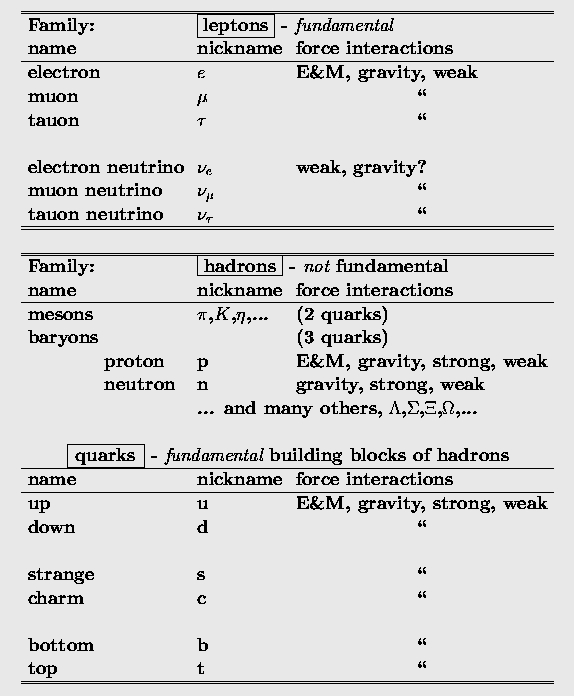Astro 103 - Lecture 28

 Lectures Lectures  |
Lecture page |
|

 Lectures Lectures  |
Lecture page |
|
``Yesterday'' universe was smaller (higher density) and hotter, so radiation density gains twice:
 radiation wins eventually
radiation wins eventually
When the Universe was hot enough, photons had energy equivalent to mass of fundamental particles
 pair-creation (photon
pair-creation (photon  particle + anti-particle)
particle + anti-particle)
 pair-annihilation (particle + anti-particle
pair-annihilation (particle + anti-particle  photon)
photon)
. . . as long as kT > mc2.
NB: Slightly more particle than anti-particles -- for unknown
reasons! This requires a "fine-tuning" of the theory. Keep this in
mind when we discuss "arguments" for  = 1.
= 1.
lepton era: 1 sec

proton + neutron  deuterium
deuterium
deuterium + deuterium  4He
4He
etc., but rarer and rarer (takes more events)
- the ``deuterium bottleneck''
 primordial nucleosynthesis makes mostly
4He.
primordial nucleosynthesis makes mostly
4He.
 109 K photons
109 K photons 75% H
23% He
+ traces of heavier elements
+ neutrinos and any other ``dark matter''
 matter is ionized
matter is ionized
 Universe is opaque to radiation.
Universe is opaque to radiation.
(temperature of a typical star-forming region)
 matter is neutral
matter is neutral
 universe is transparent to radiation
universe is transparent to radiation
This event (matter goes from being ionized  neutral) produces a ``the surface of last scattering'' of photons off of
matter. This is what we see as the cosmic microwave background
radiation (CMBR)
neutral) produces a ``the surface of last scattering'' of photons off of
matter. This is what we see as the cosmic microwave background
radiation (CMBR)
(b) Fundamental particles have different masses.
(c) The number of photons is in balance with the number of particles and anti-particles.
(d) The Universe eventually expands and cools to a critical temperature where a transition occurs.
(e) Neutral matter interacts less strongly with radiation.
(b) 4He is the first stable nucleus beyond H, and the deuterium bottleneck prevented earlier formation of heavier elements.
(c) The rate of particle + anti-particle annihilation is the same as the rate of particle + anti-particle creation.
(d) primordial nucleosynthesis took place during the matter-dominated era.
(e) The ``surface of last scattering'' prevented heavier nuclei from getting close enough to fuse.
 Lectures Lectures  |
Lecture page |
|